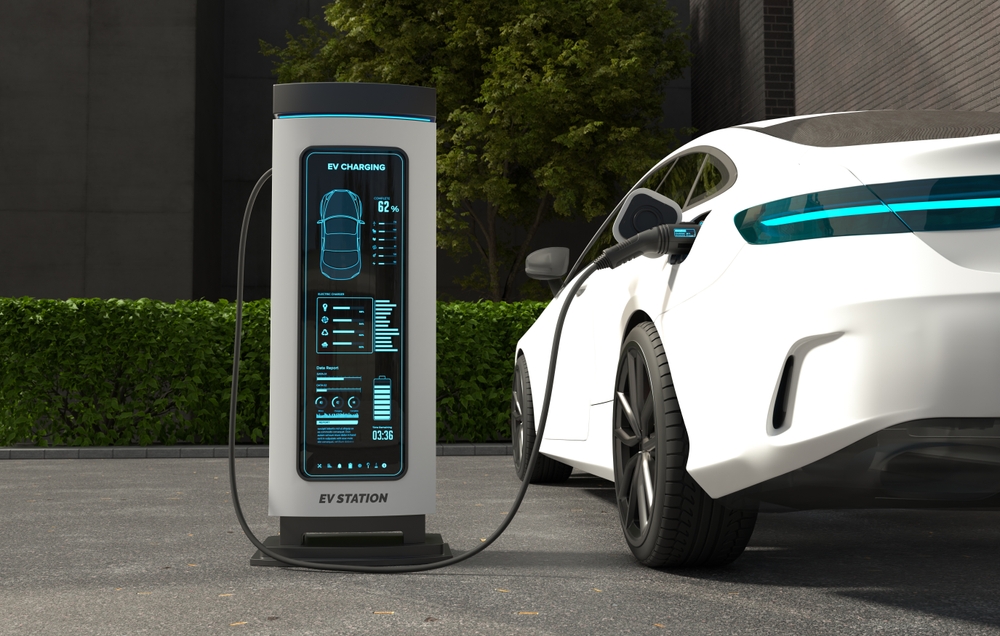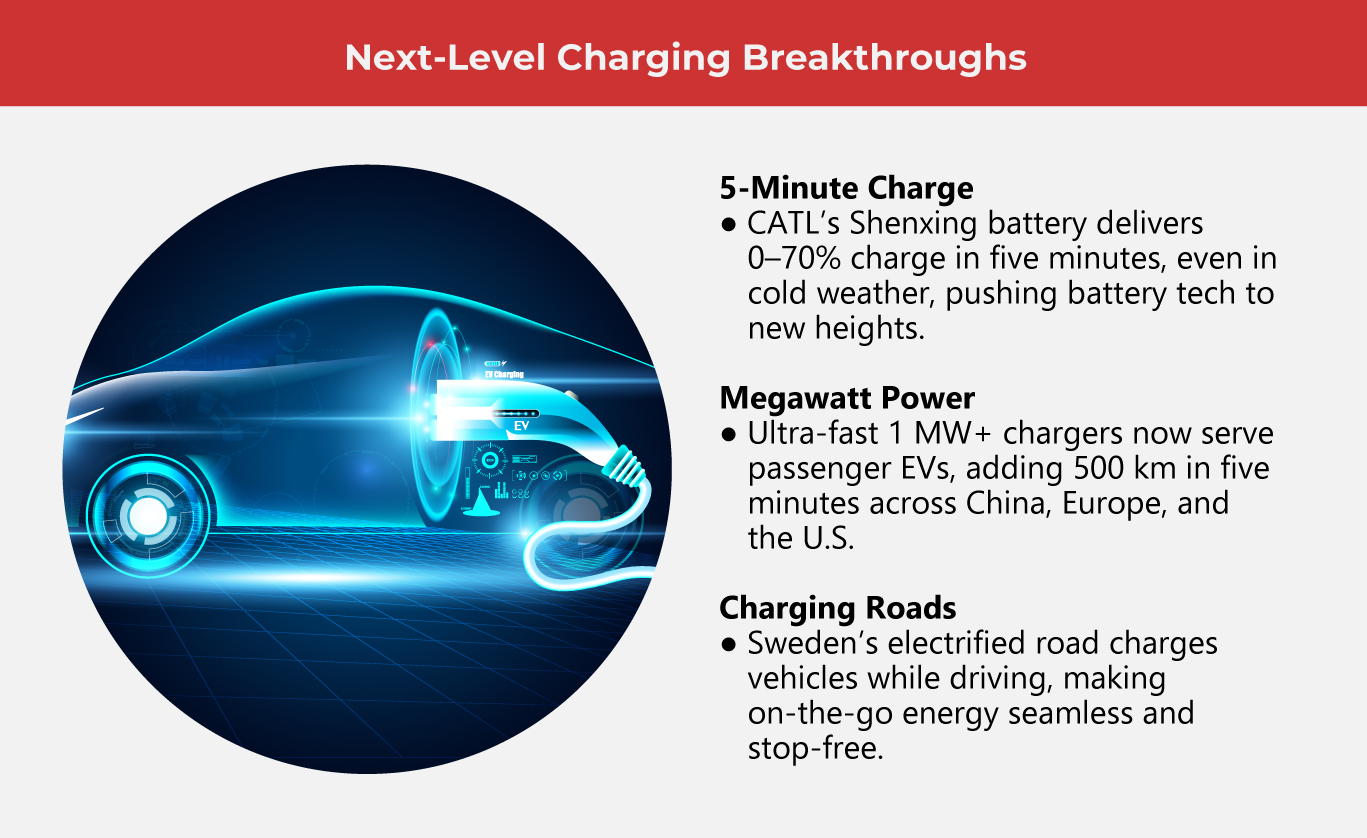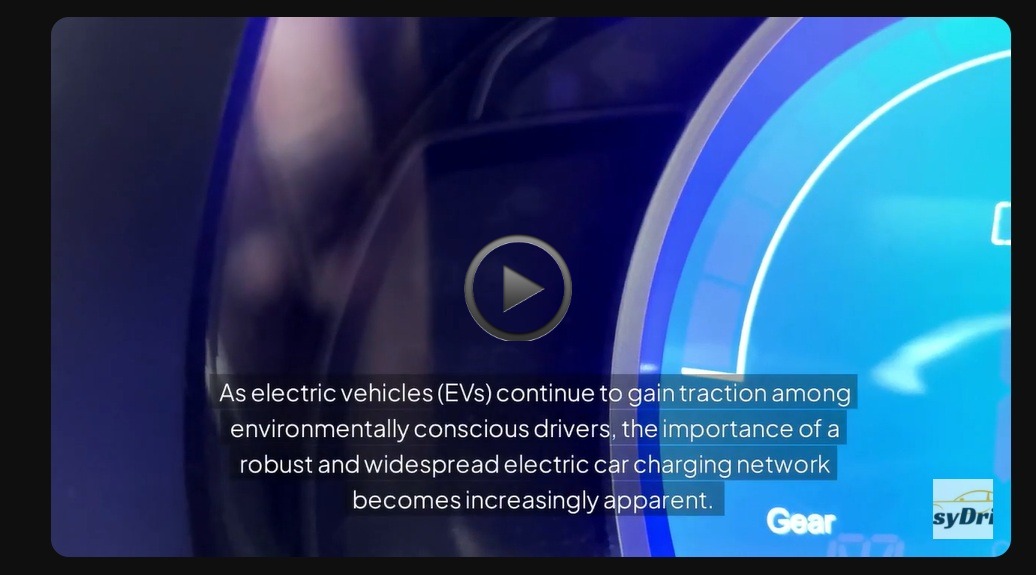Top 10 EV Charging Trends

The EV charging space is undergoing a dramatic shift as the automotive market embraces electrification at full speed. In 2025, advancements like ultra-fast charging, wireless systems, and bidirectional energy flow are redefining how we power vehicles. With tech innovation and policy momentum accelerating, the charging landscape looks nothing like it did just a few years ago.
As EVs reshape modern mobility, the world’s charging network is racing to keep up. Surging demand, global manufacturing momentum, and government-backed infrastructure pushes are fueling rapid growth. Fortune Business Insights projects the EV charger market will expand at an 18.6% compound annual growth rate (CAGR) from 2025 to 2032, with major strides expected across Europe, the US, and Asia.
While EV infrastructure has come a long way, access to charging stations remains uneven. Urban centers tend to benefit from dense, strategically placed networks, often found near shopping hubs, office buildings, residential zones, and along major highways. In contrast, rural areas still lag, facing gaps in reliable charging access. Continued system development and smarter placement are essential to closing this divide and making EVs a practical option for all drivers.
(Also read: China’s Swap Stations Are Charging Up)
10 charging innovations powering the EV revolution
Driven by rapid electrification and smarter manufacturing solutions, the EV charging landscape is undergoing a bold transformation that’s redefining how and where drivers power up.
- Upgraded home charging
Key recent advances include bi‑directional Level 2 chargers now arriving for residential use, allowing EVs to power homes or feed the grid during outages or peak pricing. Combined with AI-driven smart scheduling, solar-integrated hubs, and solar-compatible hybrid chargers, homeowners gain efficient, resilient, and grid-responsive systems.
- Portable charging
Portable EV chargers are emerging as go-anywhere solutions, especially valuable in remote areas or during unexpected battery dips. Some brands are rolling out suitcase-sized units that deliver short bursts of range on demand. These devices also support testing solutions for off-grid performance, where stations are limited.
- High-speed charging systems
Under a pilot program, San Francisco International Airport is trialling a high-capacity Skycharger system equipped with 400 kilowatt (kW) chargers, solar energy integration, and dynamic load management. Designed for fleets and travelers, these high-power stations and new battery tech are shrinking wait times dramatically.
- Tapping into renewable energy
Solar and wind‑powered chargers are gaining traction. India’s Ahmedabad has outfitted its bus depots with rooftop solar canopies powering over 34 chargers, while Wales’ Tafarnaubach hub uses a 500 kW turbine to supply ultra-fast charging. These bolster the renewable energy market and slash grid dependency.
- EV station mapping systems
Apps are refining EV charging navigation. Electromaps shows real-time station status, pricing, and reviews. PlugShare, powered by community uploads, and ChargePoint, with live availability and instant start features, guide drivers reliably. Elsewhere, A Better Route Planner employs artificial intelligence to anticipate charger availability, helping EV drivers optimize their routes.
- Infrastructure growth
Big names in the EV space are racing to scale up charging access and product testing. Shell Recharge and BP Pulse are rapidly growing their footprints across Europe and North America. Meanwhile, Tesla is opening parts of its Supercharger network to other EV brands—a strategic shift aimed at boosting inclusivity and accelerating adoption.
- Decreased capital costs for EV charging
EV charging setup costs are gradually becoming more manageable. With scaled-up production, manufacturing excellence, and government incentives such as the U.S. EV infrastructure tax credit, more businesses are entering the space. Modular systems and streamlined technology are also lowering barriers.
- Complimentary charging points
Retailers are turning to free EV charging as a strategic perk to boost engagement. Brands like IKEA and Lidl now offer no-cost or discounted charging in-store, aligning with their sustainability goals. This approach attracts eco-conscious shoppers, increases foot traffic, and builds long-term customer loyalty.
- Fast-track meters
As high-speed EV charging expands, advanced metering tech is stepping up. Next-gen DC meters now offer high-voltage support, precise multi-port tracking, and extreme weather durability, all while maintaining a strong product life profile. These tools ensure billing accuracy for property owners turning chargers into revenue sources.
- Advanced charging tech
As electric mobility scales up, smart charging platforms are transforming how energy is delivered and managed. These systems adapt to environmental factors and real-time grid conditions, reduce operational costs, and support features like scheduled charging.
(Also read: Why EV Battery Production Is on the Rise This 2025)

Station setbacks
As EVs gain popularity, the charging ecosystem is expanding—though not without its share of growing pains.
- Charging reliability
Unregulated, low-cost EV chargers are entering markets without proper oversight, raising serious concerns over safety and reliability. These uncertified units can strain networks, damage stations, and pose risks to users, ultimately delaying electrification goals. Ensuring long-term success requires strict adherence to local standards, trusted products, and skilled installers to maintain performance and safety.
- Grid strain
As EV adoption rises, local grids are feeling the strain, especially where fast chargers cluster. Power demand spikes can overload systems, prompting the need for smarter energy use. Technologies like vehicle-to-grid (V2G), battery storage, and load balancing at both site and utility levels are emerging to ease pressure and stabilize supply.
- Fragmented standards
Differing EV charging protocols across regions still frustrate drivers. Europe mandates the Combined Charging System (CCS) Combo 2 via the Alternative Fuels Infrastructure Directive (AFID), while North America favors the Society of Automotive Engineers (SAE) J1772 and CCS Combo 1. Efforts toward global alignment seek to unify the fragmented landscape.
- Compliance & certification
Meeting diverse regulatory and technical requirements poses a major challenge for EV charging stations worldwide. From Europe’s infrastructure mandates to U.S. ADA accessibility rules, operators must navigate a patchwork of codes, utility interconnection processes, and time-of-use billing models. The growing demand for accurate metering in commercial and multi-unit dwellings further complicates installation and long-term compliance.
- Major capital outlay
According to McKinsey, installing a single 350-kW EV charger in the European Union can cost as much as $150,000 when factoring in equipment, construction, and permitting. These high capital demands, especially for fast-charging infrastructure, continue to strain budgets and slow rollout, posing a significant hurdle for growth, particularly in the industrial market.
Despite these challenges, the outlook for EV charging stations remains optimistic. Advancements in ultra-fast charging, renewable integration, and AI-powered routing tools are transforming how drivers power up. With expanding networks and increased backing from both governments and private investors, today’s infrastructure hurdles are paving the way for smarter, more resilient systems that support global electric mobility.
As one of the Top 20 EMS companies in the world, IMI has over 40 years of experience in providing electronics manufacturing and technology solutions.
We are ready to support your business on a global scale.
Our proven technical expertise, worldwide reach, and vast experience in high-growth and emerging markets make us the ideal global manufacturing solutions partner.
Let's work together to build our future today.
Other Blog




